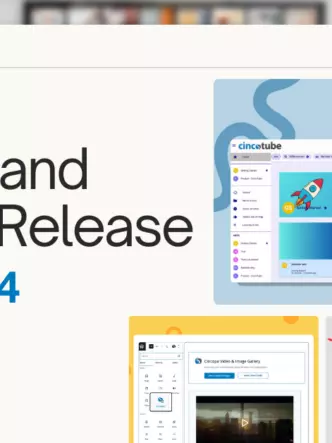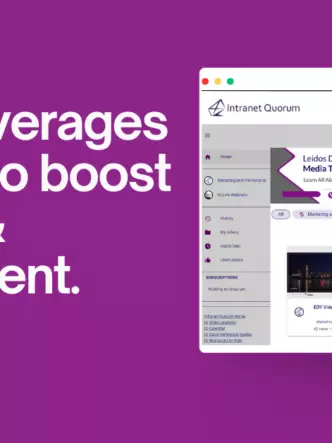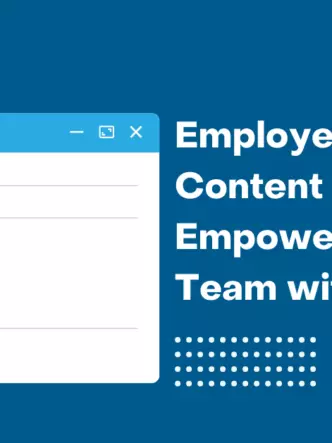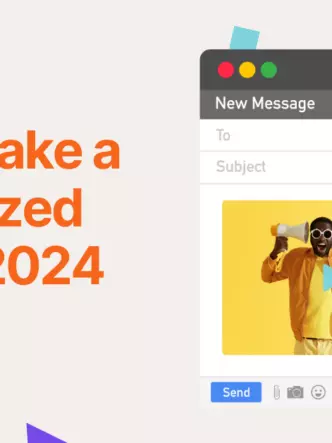In an increasingly digital world, creating a video portal offers many benefits, including being able to learn, share and connect far more easily. As technology improves many business processes, the days of communicating via bulletin boards and mass emails are giving way to the online employee portal.
Video is undoubtedly one of the most effective ways to communicate and allows expertise to be shared across a company. Even small and medium-sized businesses can benefit from a video portal for employees, saving time, money and effort.
Here are are some of the benefits of creating a Cincopa Video Portal:
Recruit top talent
Companies are increasingly using videos for recruiting. A short, recruiting video can capture the look and feel of a company in ways that traditional recruiting methods can’t.
A cleverly crafted recruitment video is immersive and intrigues potential candidates. Companies can get the attention of young, visionary, tech-savvy candidates who can help drive innovation and growth. When candidates have an idea of what it feels like to work for a company, it’s easier to weed out ones who aren’t a good fit.
In a survey, CareerBuilder found that employers receive a 34% greater application rate when they use video in a job posting. With a video portal, recruitment becomes more efficient and can make a significantly less expensive.

Onboard employees quickly and effectively
The onboarding process can and should entail the use videos, podcasts and online checklists. New hires can access them at a time and place that works for them, even outside of standard office hours. This enables new recruits to quickly become productive team members.
Train employees and enable them to learn
Relying on a few employees to deliver training isn’t necessary when companies use a video portal. Forrester Research found that employees are 75% more likely to watch a video than to read web articles, documents or emails.
Companies can record training sessions using RecTrace and make them available for everyone, ready for playback whenever viewers have time. Employees can search a library of recorded training sessions.
All employees have a way of sharing their knowledge by creating and publishing video content. Videos created by employees for the benefit of other employees are often more engaging.
Employers can search for what they need when they need it, rather than relying on trainers – this encourages independent learning and reduces training costs.
Microsoft is just one company that has found an internal video portal can reduce training costs considerably by becoming a go-to substitute for in-class training.

Training videos may be used to:
- Make basic skills training universally available (e.g. how to install printers, set up email signatures, etc.)
- Train new managers with on-demand videos to hone their management skills.
- Share expert knowledge Everyone has expertise in some area and using video can make this information available, even when that person is busy or out of the office. It also helps to preserve the knowledge, even if said expert leaves the company.
- Make sales training and sales enablement more engaging, helping the sales team connect with prospects more meaningfully. For example, role-playing in recorded videos can show what to do in certain situations.
- Compliance training can be more effective using video to cover important issues, including emergency procedures, etc.
- IT tutorials
- On-demand conference learning (recordings of conferences, presentations, etc. because not all employees attend and this offers a way to share information gained across the organization).

Data from the SAVO Group shows that only seven days after a traditional training session, the average employee will forget about 65% of the material covered and after six months that increases to about 90%.
Video is a visually stimulating medium that improves the ability to remember concepts, details and retain information for a longer time. Leveraging video training also helps provide a consistent learning experience for employees, ensuring they all receive critical information in the same way.
Encourage a connected culture
A trust-based workplace culture keeps employees happy and productive, according to thought leaders such as Great Place to Work Institute. A video portal can help foster employee relationships and establish camaraderie.
Leaders can be more accessible via a video portal and engage in team-building behavior. Teams can interact via a video portal as though they are working in the same room.
A few ways in which to use a video portal for a more connected culture:
- Have competitions, such as inter-departmental challenges
- Celebrate work and personal milestones, such as birthdays and goals achieved.
- Host social events such as a team trivia competition or a video game tournament.
Quizzes, surveys, and polls are a great way to create engaged employees who feel they have a voice. Finding ways to celebrate their success also contributes to a sense of accomplishment and may include establishing a formal employee recognition program, such as employee of the month.

Facilitate collaboration between departments
A video portal helps to do away with information silos within a business. Getting feedback, brainstorming, working on projects and sharing information all helps to build relationships and allows an organization to respond to problems faster.
Enhanced collaboration through the video portal can replace conference calls, complicated email threads, and lengthy meetings. The existence of a video portal means scheduling a formal meeting is no longer necessary – connecting with colleagues is as easy as stepping in front of the camera.
Leaders and team members are able to communicate spontaneously and engage, which creates an environment for collaboration and innovation.
Team members can use the video portal to:
- Give presentations
- Host meetings
- Connect departments working on a project

Streamline corporate communications
An employee portal allows employers to communicate the company mission, vision, and strategic plan, and help employees develop more understanding of company goals.
The HR department of a company plays a fundamental role in the relationships within an organization. A video portal allows HR professionals to disseminate and share a complete range of information, such as:
- Policies and procedures
- Job descriptions
- Benefits and entitlements
- Annual leave procedures
- Employee appraisals
- Self-service options and online forms
This self-service approach empowers employees to access information independently. They can book annual leave, update personnel records, submit expenses claims, etc. HR professionals no longer have to respond to daily requests for information. Operational efficiency increases and can quickly translate into significant savings.
A step towards encouraging good working relationships is to have online staff directories that may include short biographies, current projects, and areas of expertise.
Make customer service more efficient
Processes are fully streamlined and automated allowing different departments to collaborate efficiently. Employees are able to open requests and track them through to completion, even with customer support.
Searching for documents or vendor information is made easier. Information about products and services is readily available to all employees so that the customers always receive the most up-to-date information. Videos on the portal can:
- Share success stories, highlighting individual and team customer service wins (creates momentum and fellow team members can see what works)
- Use performance dashboards to focus on the progress of each department and project.
- Give product updates (demo videos show a product in action).

Features to look for in a video platform
These days it may be easy to create videos for training and more, but it is harder to share them. From security to searching content and hosting, there are technical challenges. Most companies use a video platform that offers the following features:
- The ability to easily record and edit videos.
- Secure, unlimited video hosting.
- Easy video search.
- Video streaming on any device.
- Detailed video analytics.
Tips to enhance your video portal
Once you’ve recorded a video, it has to be made accessible to employees. Here are some tips to help get buy-in across an organization:
- Curate and segregate videos into a logical structure, so people can find what they want easily and don’t become overwhelmed.
- Tag videos with keywords and add descriptive text to make searching easier.
- Add transcripts and captions to aid learning. Reading while listening helps with retention and when a transcript is available, employees can find the information they want quickly.
- Recruit stakeholders from different departments to help manage channels, users and come up with new video ideas.
- Give incentives to employees who regularly contribute to knowledge-sharing.
- Use interactive elements, such as quizzes or polls to ensure that viewers don’t just watch passively.
- Make sure employees are aware of user-generated content tools – create short, snackable video tutorials on how to use them.
- Think about creating contests to pick the best internal videos.
- Give employees the option to rate and/or review content.
- Consider a monthly newsletter with links to recent videos.
The bottom line
Building a video portal is not a single step process. You need to keep checking and learn from what is working and what isn’t working for your company. Done the right way, a video portal for employees achieves many purposes, including recruiting and training, streamlining processes, facilitating relationships and decreasing costs.









